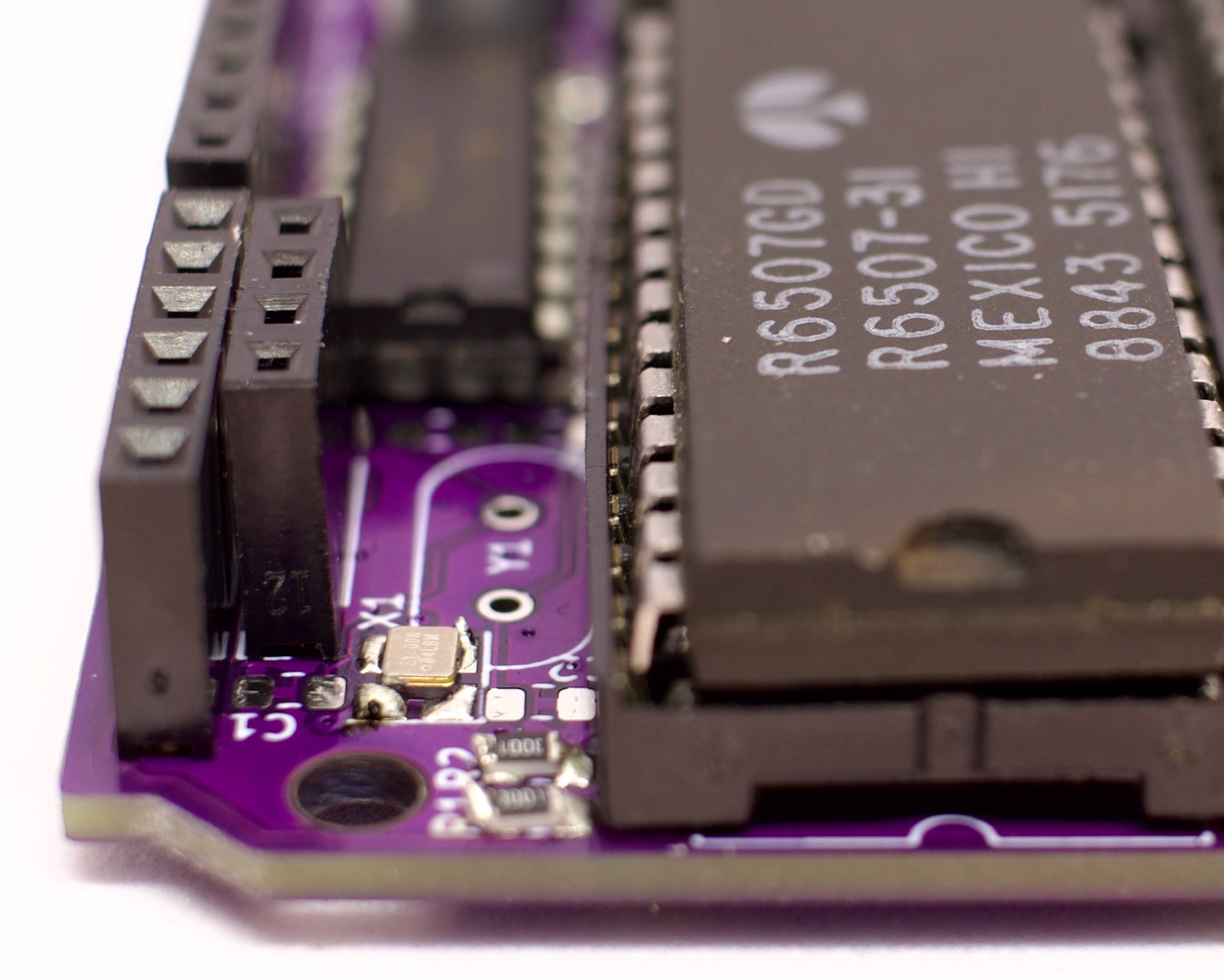PCB's arrived after just six days and I jumped the first one of them with an iron and had the whole thing done in about an hour. I certainly could've done it in 30 minutes. And it just worked! Zero bodges - but I did use a builtin hack - I think I managed to catch most of that on camera, so maybe that'll turn into a video.
The "hack" is that for the first one I decided to go with the SMD oscillator since I don't have a 1 MHz crystal and didn't want to overclock the first assembly - and it saved me from soldering a few resistors and caps.

The footprint is a bit big, since I used the "handsoldering" version included with KiCAD - smaller certainly would've been fine too since - but I guess not everyone has a 0,1mm iron tip.
I decided to put it on the 3v3 rail even though a 5V oscillator would've been a better match, since 3v3 oscillators are way more common in that size. That's out of spec for the 6502 but I know from experience it is not that picky when it comes to input clock - I've had it running stable with way less than 3v peak-to-peak so I have no doubt that an ultra stable modern oscillator with 3 ns rise and fall times will do just fine. If supply of 5V oscillators in that size turn out to be less of a problem I'll probably change it to a 5V can.
Speaking of - if a teacher wanted to teach soldering and use this as a class set - what I would do would probably be to have the board house do the SMD assembly, since it's single sided and only uses off the shelf SMD components, and have the students assemble the THT components as a kit.
You might notice the extra 4 pin connector on the photo above that's usually not found on an Arduino board - it has GND VCC SCL and SDA which is perfect for many i2c breakout boards.. Specifically I hope to use it with one of the cheap SSD1306 128x64 OLED boards. Note to self - maybe at least having pads for i2c pullups would be a good idea for the next revision.
Stay tuned!
 Anders Nielsen
Anders Nielsen
Discussions
Become a Hackaday.io Member
Create an account to leave a comment. Already have an account? Log In.